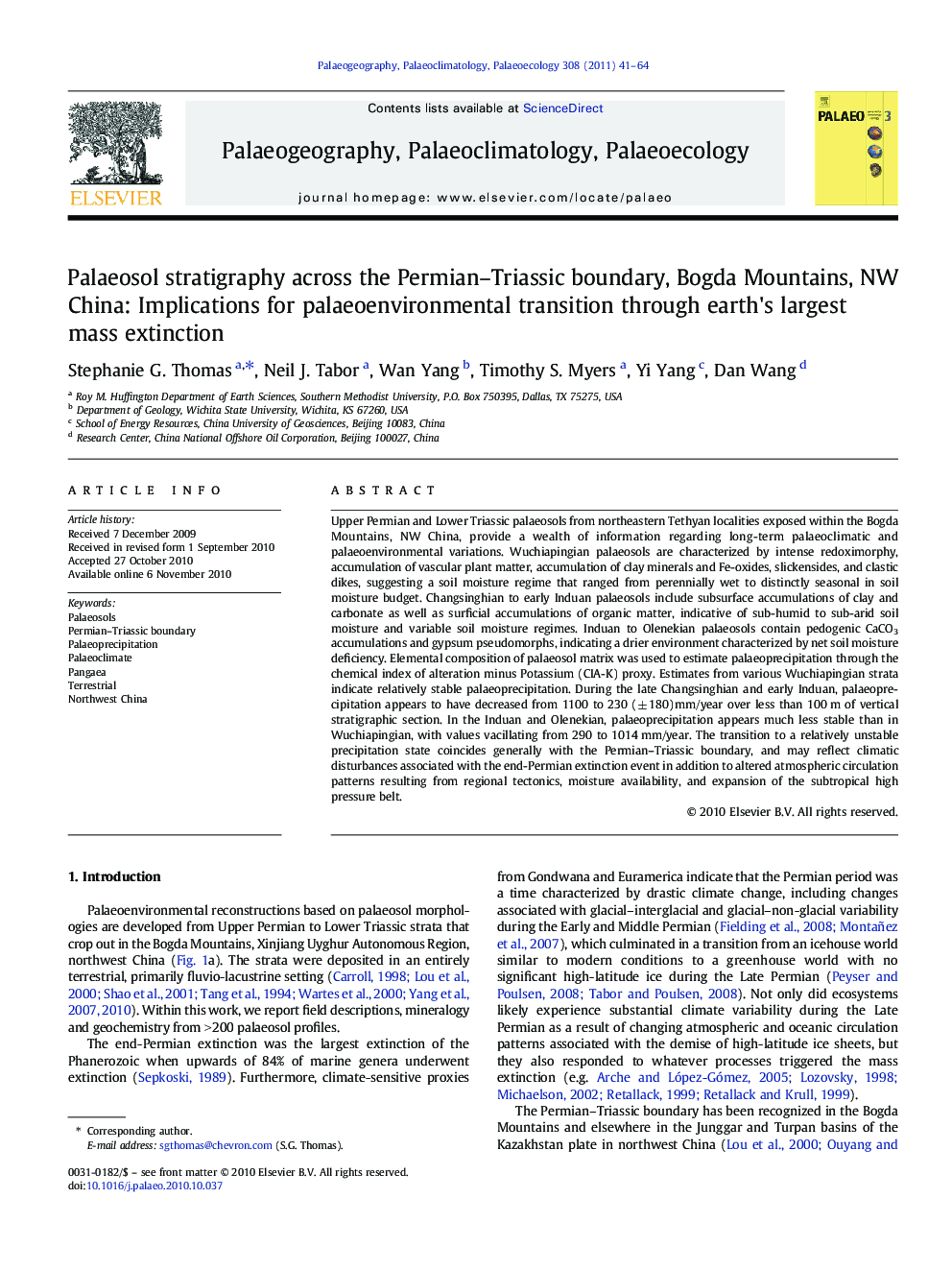| کد مقاله | کد نشریه | سال انتشار | مقاله انگلیسی | نسخه تمام متن |
|---|---|---|---|---|
| 4467218 | 1622252 | 2011 | 24 صفحه PDF | دانلود رایگان |

Upper Permian and Lower Triassic palaeosols from northeastern Tethyan localities exposed within the Bogda Mountains, NW China, provide a wealth of information regarding long-term palaeoclimatic and palaeoenvironmental variations. Wuchiapingian palaeosols are characterized by intense redoximorphy, accumulation of vascular plant matter, accumulation of clay minerals and Fe-oxides, slickensides, and clastic dikes, suggesting a soil moisture regime that ranged from perennially wet to distinctly seasonal in soil moisture budget. Changsinghian to early Induan palaeosols include subsurface accumulations of clay and carbonate as well as surficial accumulations of organic matter, indicative of sub-humid to sub-arid soil moisture and variable soil moisture regimes. Induan to Olenekian palaeosols contain pedogenic CaCO3 accumulations and gypsum pseudomorphs, indicating a drier environment characterized by net soil moisture deficiency. Elemental composition of palaeosol matrix was used to estimate palaeoprecipitation through the chemical index of alteration minus Potassium (CIA-K) proxy. Estimates from various Wuchiapingian strata indicate relatively stable palaeoprecipitation. During the late Changsinghian and early Induan, palaeoprecipitation appears to have decreased from 1100 to 230 (± 180) mm/year over less than 100 m of vertical stratigraphic section. In the Induan and Olenekian, palaeoprecipitation appears much less stable than in Wuchiapingian, with values vacillating from 290 to 1014 mm/year. The transition to a relatively unstable precipitation state coincides generally with the Permian–Triassic boundary, and may reflect climatic disturbances associated with the end-Permian extinction event in addition to altered atmospheric circulation patterns resulting from regional tectonics, moisture availability, and expansion of the subtropical high pressure belt.
Journal: Palaeogeography, Palaeoclimatology, Palaeoecology - Volume 308, Issues 1–2, 15 July 2011, Pages 41–64